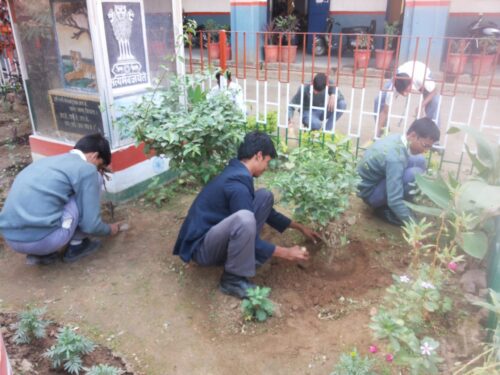Eating together is a traditional practice not only in India but in most of the countries of the world. It is practiced in all types of societies and in all cultures.
People of a particular community used to assemble on certain occasion and eat together the traditional food popular in that community. The occasions for community eating are practiced on diverse occasions like birth of a child, marriage, success or victory and even on death.
A community is a social, religious, occupational, or other group sharing common characteristics or interests and perceiving or perceived itself as distinct in some respect from the larger society within which it exists.
Getting together, interacting with some purpose and eating together have specific purposes. However, it is generally accepted that this type of practice creates unity, brotherhood, and strength. People may assemble at one place, discuss some issue, formulate plan, decide course of action etc. and eat together at the end- is a popular practice seen across the world since very long.
In modern time community eating is being practiced in schools to feed children for retaining them in schools. Children of all the religions, caste and creed study together, play together and eat together. It not only checks drop outs, it helps in creating brotherhood, harmony, unity and strength.
Mass feeding or eating of school children can be taken as a powerful instrument for achieving many multi- sectoral benefits – education, gender equality, food security, poverty reduction, nutrition, health and agricultural development.
The school feeding programme can be treated a social safety net for children living in poverty and food insecurity, and as a tool for stimulating local agricultural production and economic opportunities in rural communities.
Mid-Day- Meal is an ambitious programme of the Government of India. With a view to enhancing enrolment, retention and attendance and simultaneously improving nutritional levels among children, the National Programme of Nutritional Support to Primary Education (NP-NSPE) was launched as a Centrally Sponsored Scheme on 15th August 1995.
Initially, it was started in 2408 blocks in the country. By the year 1997-98 the Nutritional Support to Primary Education was introduced in all blocks of the country.
It was further extended in 2002 to cover not only children in classes I-V of government, government aided and local body schools, but also to cover children studying in Education Guarantee Scheme (EGS) and Alternative and Innovative Education (AIE) centres.
Central Assistance under the scheme consisted of free supply of food grains @ 100 grams per child per school day, and subsidy for transportation of food grains at low cost.
Feature Image: Indian Express




